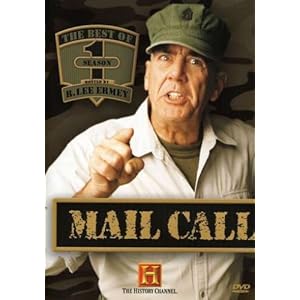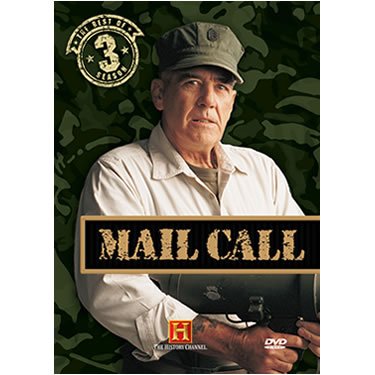In this clip from "Mail Call", R. Lee Ermey test-drives the Flyer 21, a lightweight off-roading multipurpose vehicle currently being used by American special forces.
Thursday, August 19, 2010
Jetpack
Jet pack, rocket belt, rocket pack, and similar names, are various types of device, usually worn on the back, that use jets of escaping gases (or in some cases liquid water) to allow a single user to fly.
The concept of these devices emerged from science fiction in the 1920s and popularised in the 1960s as the technology became a reality. Currently, the only practical use of the jet pack has been extra-vehicular activity for astronauts. Despite decades of advancement in the technology, the challenges of Earth's atmosphere, Earth's gravity, and the human body (which is not well suited for this type of flight) remain an obstacle to its potential use in the military and as a means of personal transport.
The concept of these devices emerged from science fiction in the 1920s and popularised in the 1960s as the technology became a reality. Currently, the only practical use of the jet pack has been extra-vehicular activity for astronauts. Despite decades of advancement in the technology, the challenges of Earth's atmosphere, Earth's gravity, and the human body (which is not well suited for this type of flight) remain an obstacle to its potential use in the military and as a means of personal transport.
WWII D-day Allied Airborne Equipment
The success of the amphibious landings depended on the establishment of a secure lodgment from which to expand the beachhead to allow the build up of a well-supplied force capable of breaking out. The amphibious forces were especially vulnerable to strong enemy counterattacks before the build up of sufficient forces in the beachhead could be accomplished. To slow or eliminate the enemy's ability to organize and launch counterattacks during this critical period, airborne operations were used to seize key objectives, such as bridges, road crossings, and terrain features, particularly on the eastern and western flanks of the landing areas. The airborne landings some distance behind the beaches were also intended to ease the egress of the amphibious forces off the beaches, and in some cases to neutralize German coastal defence batteries and more quickly expand the area of the beachhead. The U.S. 82nd and 101st Airborne Divisions were assigned to objectives west of Utah Beach. The British 6th Airborne Division was assigned to similar objectives on the eastern flank. 530 Free French paratroopers from the British Special Air Service Brigade, were assigned to objectives in Brittany from 5 June to August.
Shrapnel
Shrapnel shells were anti-personnel artillery munitions which carried a large number of individual bullets close to the target and then ejected them to allow them to continue along the shell's trajectory and strike the target individually. They relied almost entirely on the shell's velocity for their lethality. The munition has been obsolete since the end of World War I for anti-personnel use, when it was superseded by high-explosive shells for that role. The functioning and principles behind Shrapnel shells are fundamentally different from high-explosive shell fragmentation. Shrapnel is named after Major-General Henry Shrapnel (1761–1842), an English artillery officer, whose experiments, initially conducted in his own time and at his own expense, culminated in the design and development of a new type of artillery shell.
Wednesday, August 18, 2010
Browning 30 Caliber Machine Gun
Browning .30 Caliber Machine Gun (M1919 Browning)
The M1919 Browning is a .30 caliber medium machine gun that was widely used during the 20th century. It was used as a light infantry, coaxial, mounted, aircraft, and anti-aircraft machine gun by the U.S. and many other countries, especially during World War II, the Korean War, and the Vietnam War. Although it began to be superseded by newer designs in the later half of the century (such as by the M60 machine gun), it remained in use in many North Atlantic Treaty Organization (NATO) countries and elsewhere for much longer. It is very similar in design to the larger .50 in (12.7 mm) M2 Machine Gun, which is also a Browning-designed weapon and is still in NATO service.
Many M1919s were rechambered for the new 7.62 × 51 mm NATO round and served into the 1990s, as well as up to the present day in some countries. The United States Navy also converted many to 7.62 mm NATO, and designated them Mk 21 Mod 0; they were commonly used on river craft in the 1960s and 1970s in Vietnam.
The M1919 was an air-cooled development of the standard US machine gun of World War I, the Browning M1917, as designed by John M. Browning.
What is .30 Caliber Machine Gun from its brother BAR?
The M1919 Browning is a .30 caliber medium machine gun that was widely used during the 20th century. It was used as a light infantry, coaxial, mounted, aircraft, and anti-aircraft machine gun by the U.S. and many other countries, especially during World War II, the Korean War, and the Vietnam War. Although it began to be superseded by newer designs in the later half of the century (such as by the M60 machine gun), it remained in use in many North Atlantic Treaty Organization (NATO) countries and elsewhere for much longer. It is very similar in design to the larger .50 in (12.7 mm) M2 Machine Gun, which is also a Browning-designed weapon and is still in NATO service.
Many M1919s were rechambered for the new 7.62 × 51 mm NATO round and served into the 1990s, as well as up to the present day in some countries. The United States Navy also converted many to 7.62 mm NATO, and designated them Mk 21 Mod 0; they were commonly used on river craft in the 1960s and 1970s in Vietnam.
The M1919 was an air-cooled development of the standard US machine gun of World War I, the Browning M1917, as designed by John M. Browning.
What is .30 Caliber Machine Gun from its brother BAR?
Grenade Launcher
SEASON 1
Grenade Launcher
A grenade launcher is a weapon that launches a grenade with more accuracy, higher velocity, and to greater distances than a soldier could throw it by hand.
Grenade launchers can either come in the form of standalone weapons (either single-shot or repeating) or attachments mounted under the barrel of a rifle. Alternatively, rifles have been designed to fire rifle grenades, either from their muzzle or from a spigot-type detachable launcher. Larger grenade launchers may be mounted on vehicles.
Question: Just how does the modern grenade launcher works?
Grenade Launcher
A grenade launcher is a weapon that launches a grenade with more accuracy, higher velocity, and to greater distances than a soldier could throw it by hand.
Grenade launchers can either come in the form of standalone weapons (either single-shot or repeating) or attachments mounted under the barrel of a rifle. Alternatively, rifles have been designed to fire rifle grenades, either from their muzzle or from a spigot-type detachable launcher. Larger grenade launchers may be mounted on vehicles.
Question: Just how does the modern grenade launcher works?
Monday, August 16, 2010
Mail Call Episodes Collection
Welcome to my blog!
In this blog, I gonna share some videos from History Channel: Mail Call hosted by Lee Ermey. Mail Call discuss about trivias behind Military stuffs. What kind of weapons? How to use? Where it made from? Who is behind this?
With the help of youtube, this blog, I made my own review. I have 1-7 Seasons of Mail Call. I'll gonna post it one by one. Leave your comments & suggestion about the clip.
MAIL CALL SEASON 1

CLICK HERE FOR SEASON 1 EPISODES!!
MAIL CALL SEASON 2

CLICK HERE FOR SEASON 2 EPISODES!! (Coming Soon)
MAIL CALL SEASON 3

CLICK HERE FOR SEASON 3 EPISODES!! (Coming Soon)
In this blog, I gonna share some videos from History Channel: Mail Call hosted by Lee Ermey. Mail Call discuss about trivias behind Military stuffs. What kind of weapons? How to use? Where it made from? Who is behind this?
With the help of youtube, this blog, I made my own review. I have 1-7 Seasons of Mail Call. I'll gonna post it one by one. Leave your comments & suggestion about the clip.
MAIL CALL SEASON 1

CLICK HERE FOR SEASON 1 EPISODES!!
MAIL CALL SEASON 2

CLICK HERE FOR SEASON 2 EPISODES!! (Coming Soon)
MAIL CALL SEASON 3

CLICK HERE FOR SEASON 3 EPISODES!! (Coming Soon)
Subscribe to:
Posts (Atom)